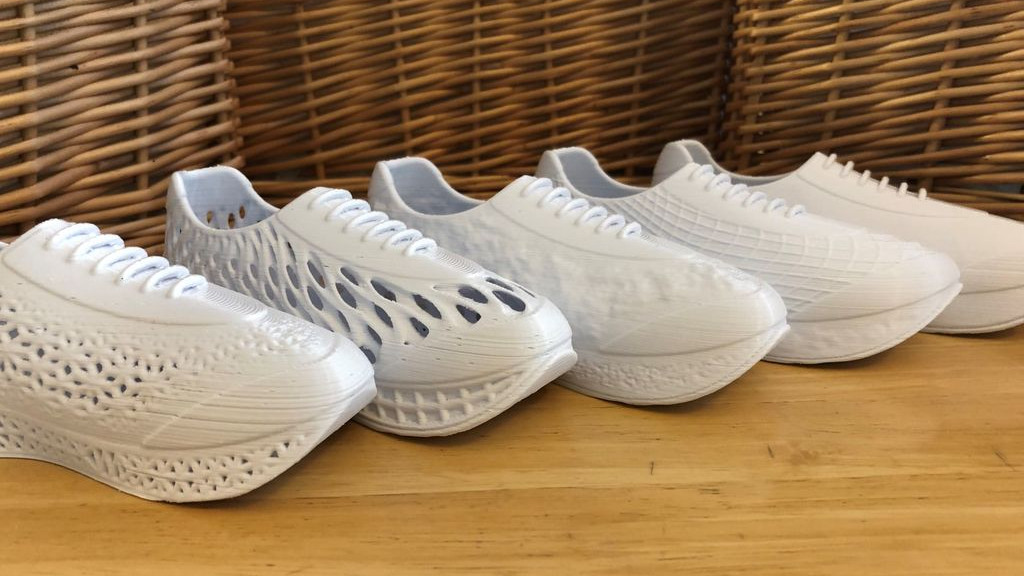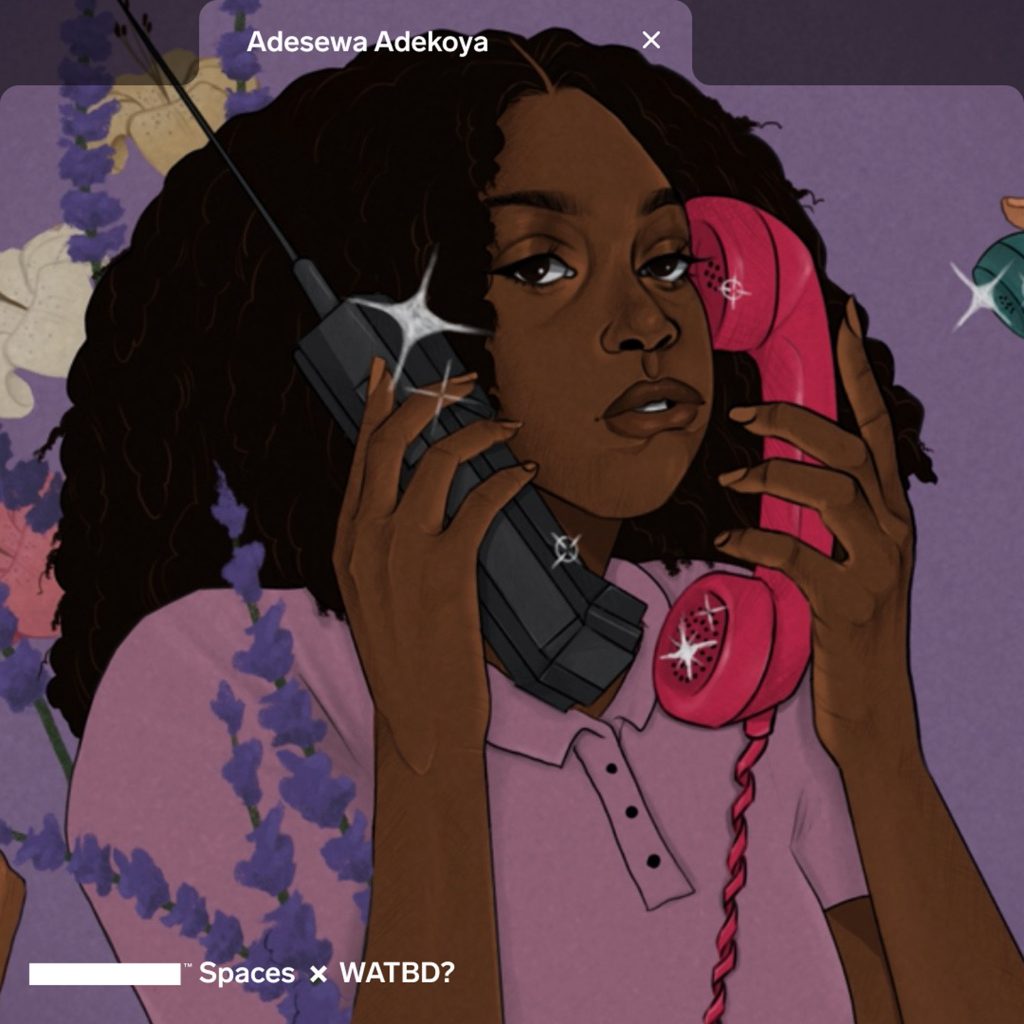#digitaldesign
Maisie Wilen uses giant otherworldly holograms to model latest collection
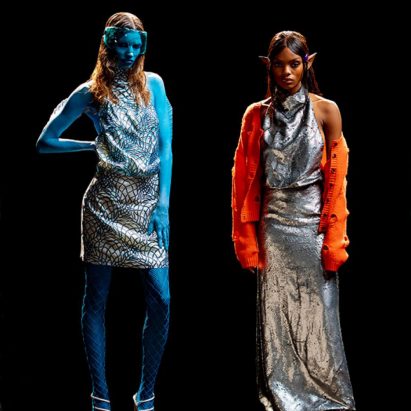
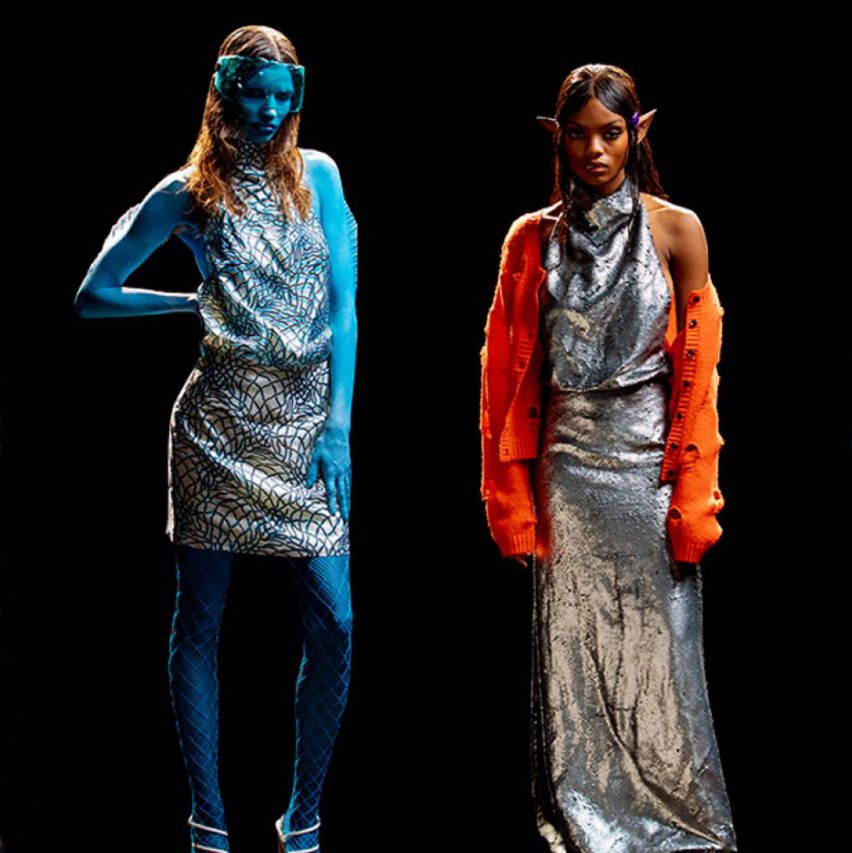
Fashion label Maisie Wilen showcased its autumn/winter collection using a cast of seven-foot-tall holograms at its New York Fashion Week show.
Set in a dark empty room, the presentation consisted of 28 holograms of different models that were beamed into the room using more than a hundred simultaneously running cameras.
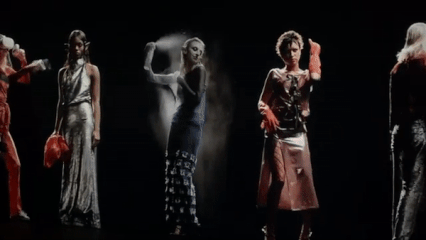 Holographic models showcased Maisie Wilen's AW22 fashion collection
Holographic models showcased Maisie Wilen's AW22 fashion collection
Styled to resemble Monster High dolls, they donned prosthetic fangs, gills and pointed ears alongside bright blue and pink body paint, blurring the line between fantasy and reality.
Some of the looped, moving projections showed the models pointing or laughing at the audience, while others appeared to be electrocuted or blow bubbles from their mouths.
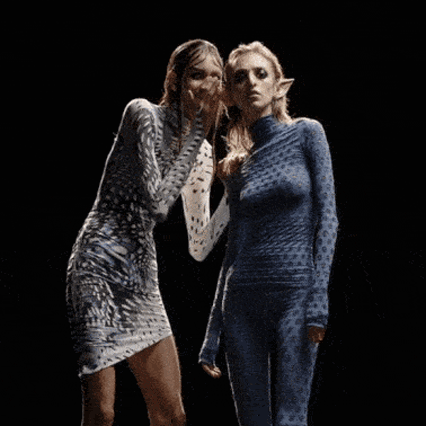 Some of the moving holograms interacted with the audience
Some of the moving holograms interacted with the audience
"The performances were so engaging that many who attended lingered longer than they might have for a conventional fashion show," one reporter wrote.
The event took place in real life in front of a real audience, but the actual presentation of the garments was entirely digital, which according to Maisie Wilen makes it the "first-ever all-holographic fashion show".
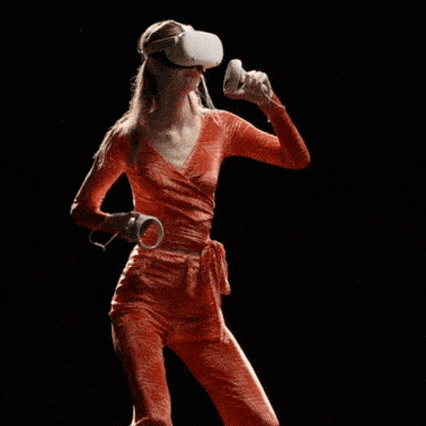 Another projection shows a model playing with a VR headset
Another projection shows a model playing with a VR headset
Each projection showcased a look from the brand's latest collection, spanning iridescent vinyl trenchcoats, matt silver sequin flares and skintight catsuits with op-art prints.
"I wanted to delve into what could prompt the viewer to question their reality," co-founder Maisie Schloss told Vogue. "The clothes have optical illusions, and we use a lot of textiles with visual effects."
[ 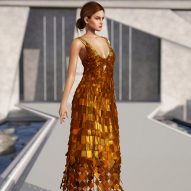
Read:
Jonathan Simkhai stages FW22 fashion show in virtual world Second Life
](https://www.dezeen.com/2022/02/17/jonathan-simkhai-second-life-fw22-fashion-show/)
The holograms were created in collaboration with Yahoo using the web company's volumetric video technology, which involved surrounding each of the models with 106 separate cameras and capturing them in ultra-high 6K resolution from all directions at the same time.
Unlike in 360-degree videos, where multiple cameras face outward from a central rig to capture a flat image of their surroundings, this footage helps to create a kind of 3D model that can then be projected onto a wall to create the impression of a real, larger-than-life person.
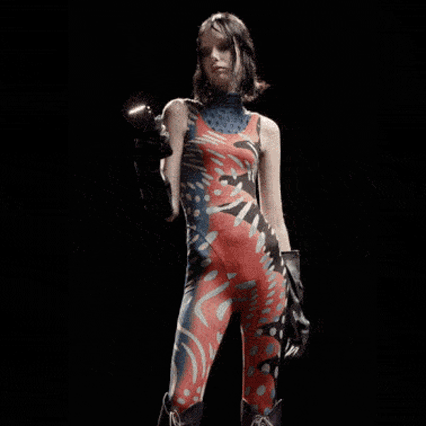 Each projection was looped like a gif
Each projection was looped like a gif
For those unable to attend the show, a dedicated website houses all of the 3D models and allows users to place them into their surrounding environment using augmented reality (AR).
"You get to zoom in on them, beam them into your space to walk around them," Schloss told Vogue. "It's a level of engagement that we haven't had with the live show previously."
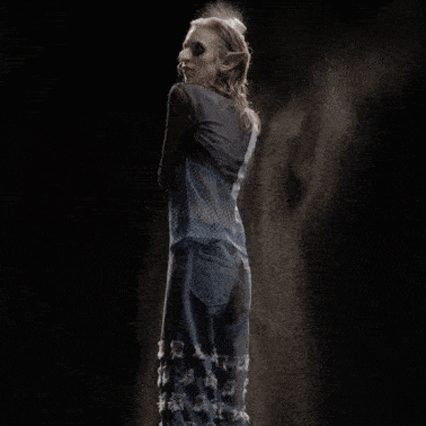 The holograms were created using volumetric video technology
The holograms were created using volumetric video technology
Fashion has long toyed with holograms, from Alexander McQueen projecting a dancing Kate Moss into his autumn/winter 2006 show to Diesel floating giant aquatic creatures over its runway.
In the last year, brands from Gucci to Balenciaga have moved beyond just virtual set dressing to creating entire virtual garments, which can only be worn in AR or in the growing network of virtual worlds known as the metaverse.
Elsewhere at New York Fashion Week, designer Jonathan Simkhai presented his latest collection in the online world of Second Life this month and made the clothes available as virtual wearables for players to purchase before ever showing their physical counterparts.
All imagery is courtesy of Yahoo.
The post Maisie Wilen uses giant otherworldly holograms to model latest collection appeared first on Dezeen.
#all #design #fashion #technology #news #digitaldesign #technologyanddesign #newyorkfashionweek #catwalks
Jonathan Simkhai stages FW22 fashion show in virtual world Second Life
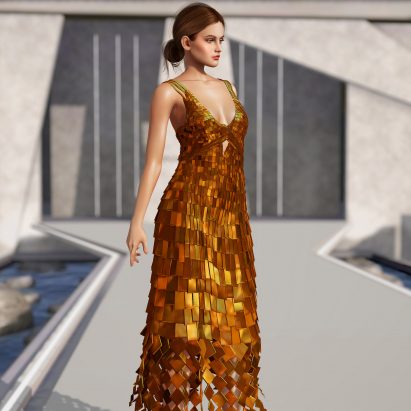
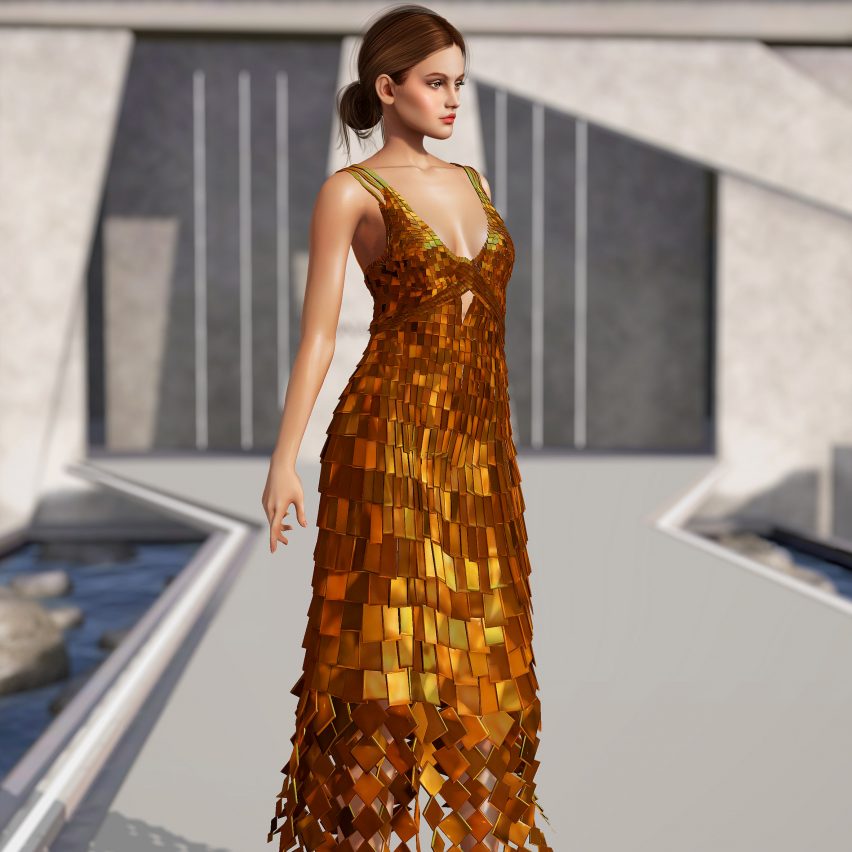
Fashion editors and influencers assumed digital avatars to take up their front-row seats at Jonathan Simkhai's Fall/Winter 2022 runway show, which was presented in the virtual world of Second Life during New York Fashion Week.
The show featured ten looks from the designer's latest physical collection that were turned into virtual wearables and modelled by characters within the online platform.
After first going on sale to Second Life users, who can use the digital garments to dress their own avatars, six of the pieces are being auctioned off as non-fungible tokens (NFTs) for use in other 3D virtual environments.
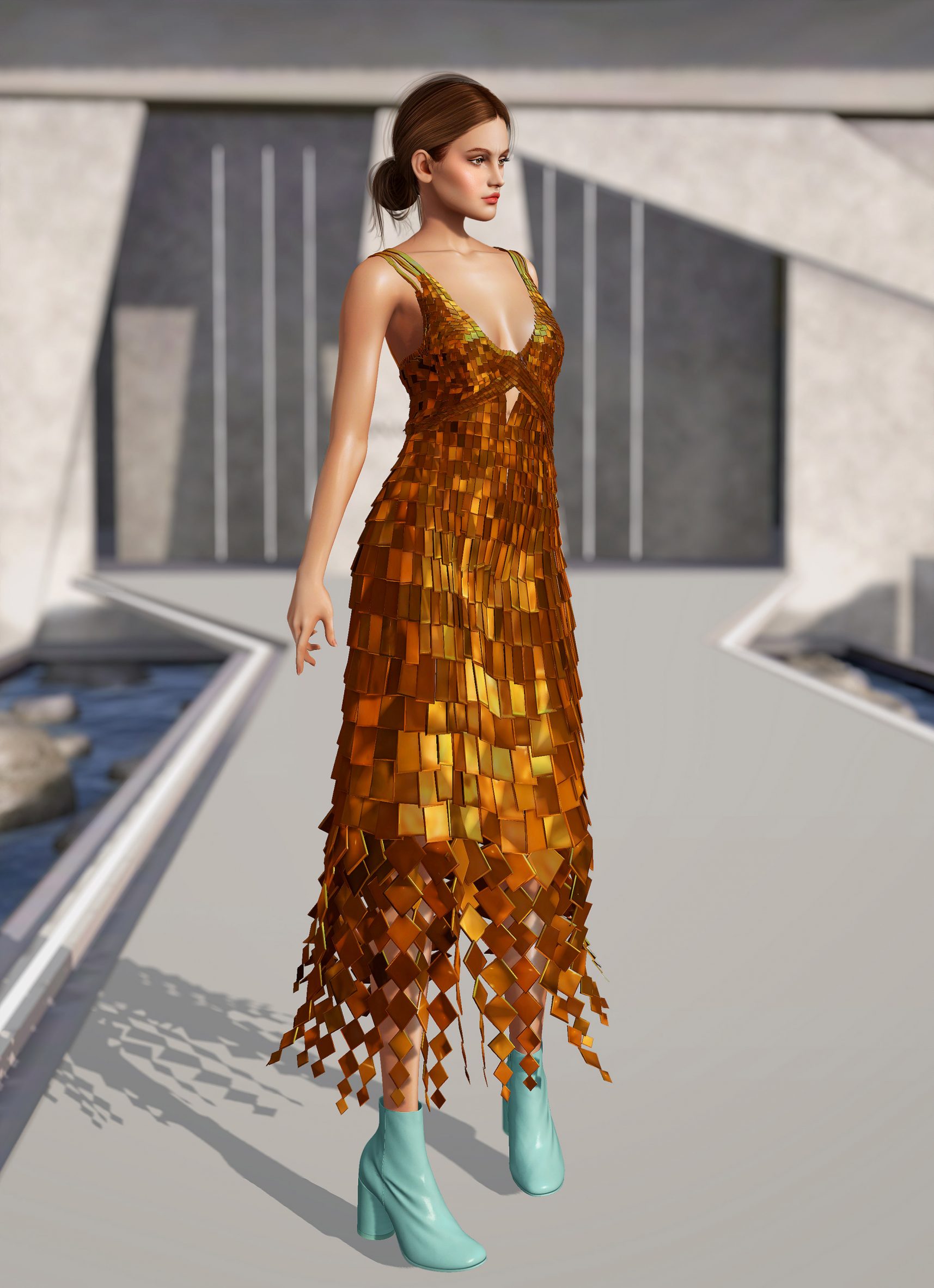 Jonathan Simkhai presented his FW22 ready-to-wear collection in Second Life
Jonathan Simkhai presented his FW22 ready-to-wear collection in Second Life
The day after the virtual event, Simkhai presented the full physical ready-to-wear collection to journalists and buyers by appointment in New York, rather than staging a real-life runway show.
"I really wanted to break the ice and figure this new world out and try to expose my customer to it, but also acquire a new customer," Simkhai told Vogue.
"It's not like I was doing one instead of the other; it was business as usual with an extra fun layer."
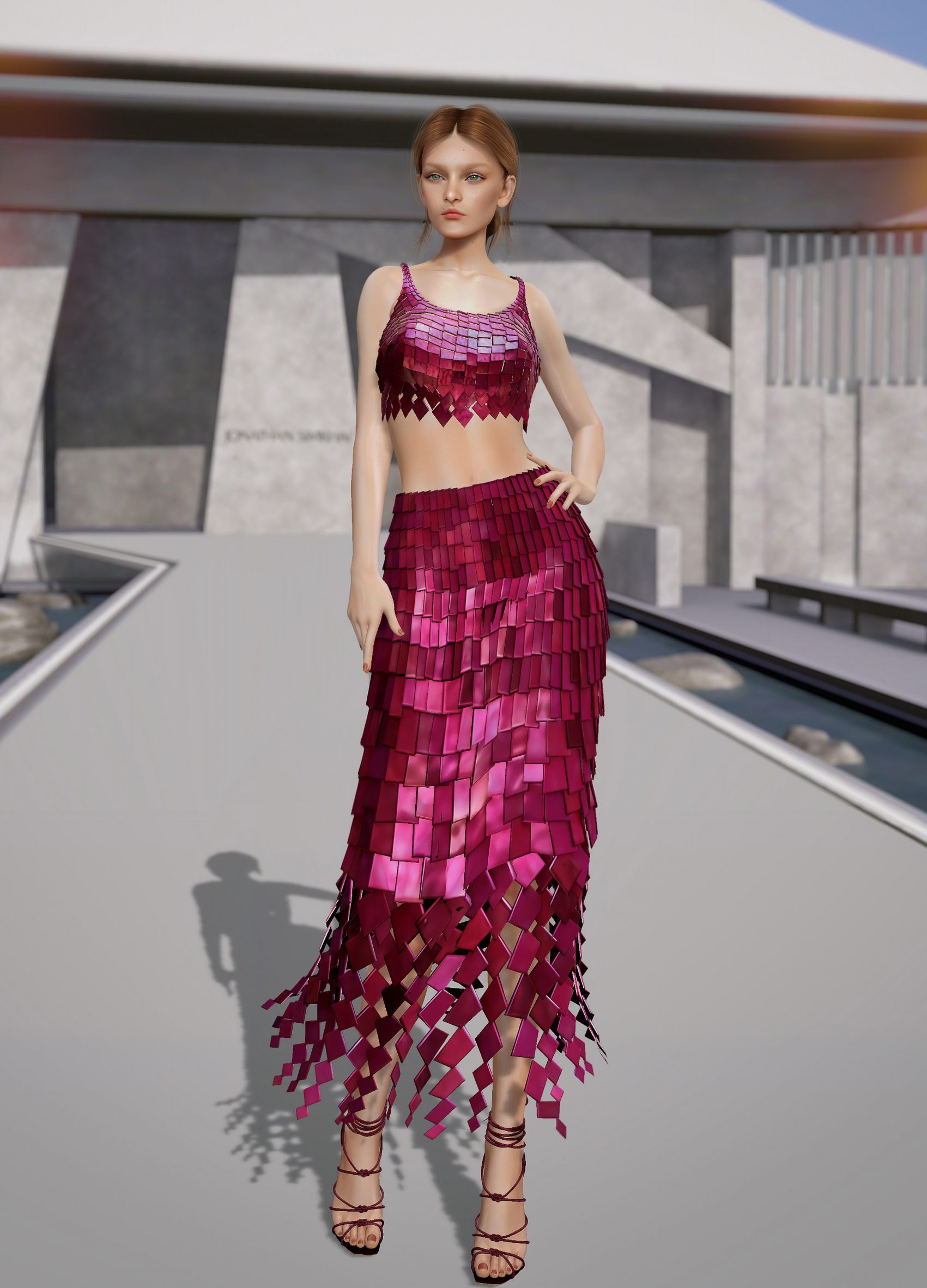 The digital wearables can be worn by avatars in 3D virtual worlds
The digital wearables can be worn by avatars in 3D virtual worlds
The Second Life event was organised by Everyrealm, the "metaverse real estate" developer also responsible for crafting the presentation's set design.
Rather than transporting viewers to a surreal environment that would be impossible to recreate in real life, this consists of a traditional linear grey runway, surrounded by shallow pools of water.
[ 
Read:
Dezeen's top 10 designs for the metaverse from 2021
](https://www.dezeen.com/2021/12/21/metaverse-designs-review-2021/)
Avatars strutted along this raised platform, modelling virtual wearables designed for Simkhai by digital fashion house Blueberry.
This involved taking the real-life garments from the designer's FW22 collection and creating 3D models of them with the same software that is used to design video games.
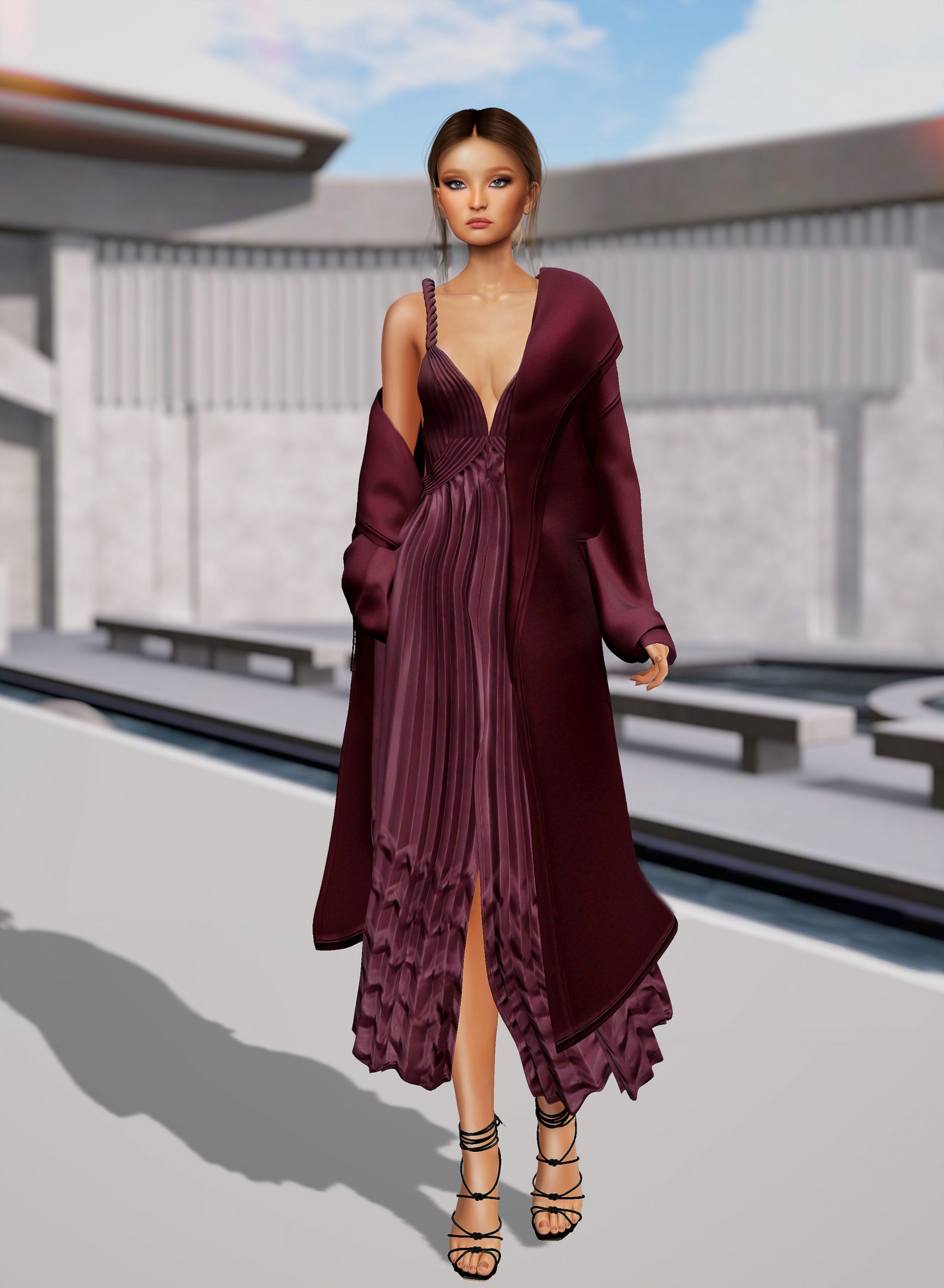 The pieces are 3D models of real, physical garments
The pieces are 3D models of real, physical garments
A slew of fashion brands from Balenciaga to Nike has recently started investing in virtual wearables and NFTs as a way to sell products to more people.
Companies are also quickly beginning to look beyond just garments and towards creating immersive experiences in the growing network of virtual worlds called the metaverse.
Previously, Gucci has hosted a virtual exhibition in Roblox, while designers Collina Strada and Mimi Wade hosted fashion shows in online metaverse IMVU.
The post Jonathan Simkhai stages FW22 fashion show in virtual world Second Life appeared first on Dezeen.
#all #design #fashion #news #digitaldesign #digitalfashion #newyorkfashionweek #catwalks #metaverse
Nike gets "metaverse-ready" with acquisition of virtual sneaker company RTFKT
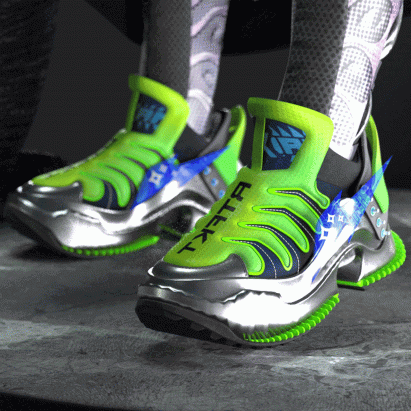
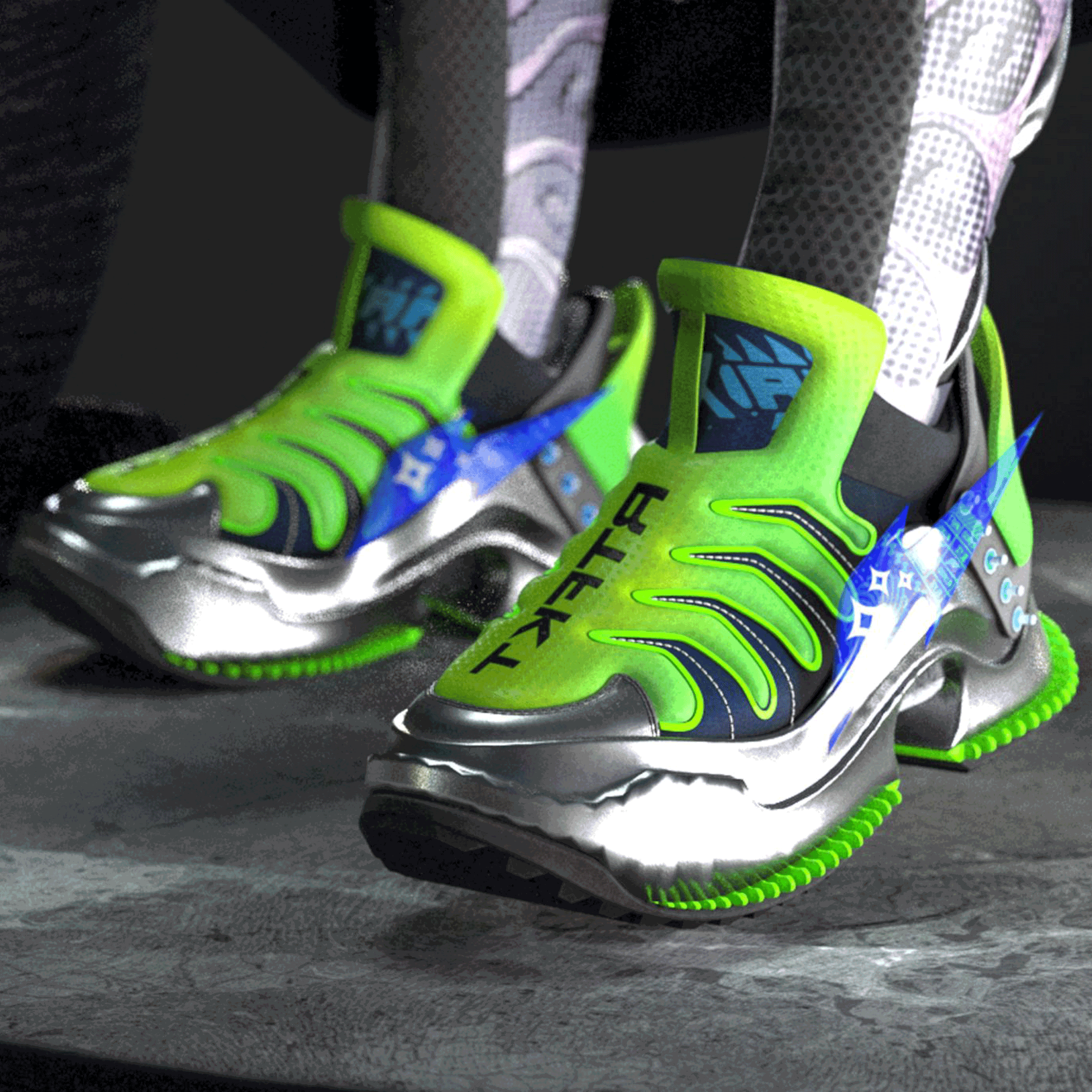
Sportswear brand Nike has announced its acquisition of RTFKT, a digital design studio producing trainers and other collectibles that can be worn across different online environments.
Buying RTFKT could help Nike ramp up its own production of virtual wearables without having to rely on outside help. RTFKT's products include neon-coloured platforms that it created with The Fabricant.
At the same time, Nike is hoping to provide the start-up with the funding to further explore the possibilities presented by the metaverse, the emerging digital universe where people can experience a parallel life to their real-world existence.
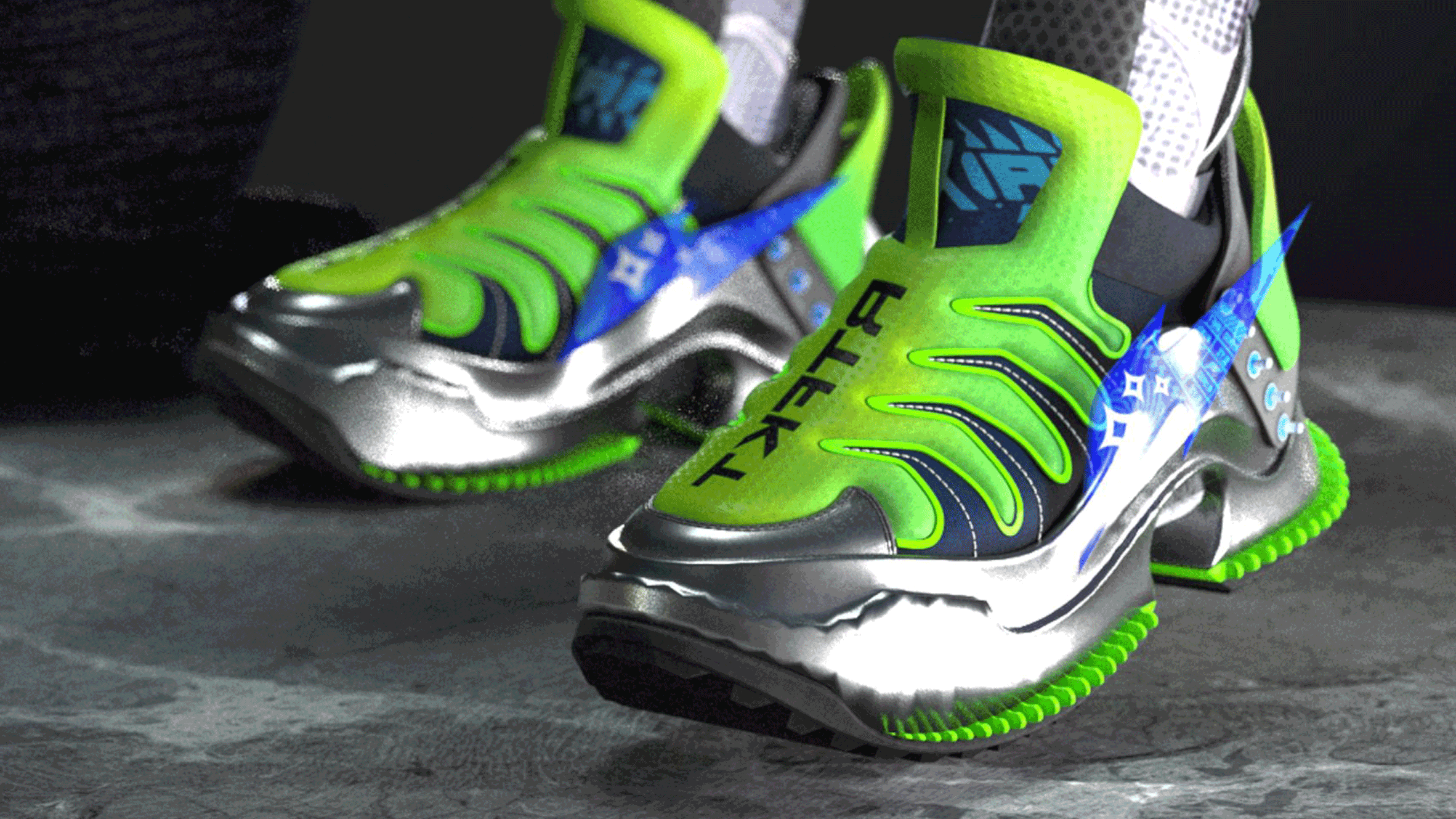 Top image: RTFKT joins Jordan and Converse in Nike's stable of brands. Above: virtual trainers created with The Fabricant
Top image: RTFKT joins Jordan and Converse in Nike's stable of brands. Above: virtual trainers created with The Fabricant
"This acquisition is another step that accelerates Nike's digital transformation and allows us to serve athletes and creators at the intersection of sport, creativity, gaming and culture," said Nike CEO and president John Donahoe.
"Our plan is to invest in the RTFKT brand, serve and grow their innovative and creative community and extend Nike's digital footprint and capabilities."
The companies did not disclose the terms of the deal.
RTFKT, which was founded by Benoit Pagotto, Chris Le and Steven Vasilev in January 2020, creates "metaverse-ready sneakers and collectibles" with the aim of bringing the scarcity culture of streetwear and limited-edition drops to the digital world.
View this post on Instagram
The Fabricant x RTFKT trainer was sold as an NFT
"Since we started, we always looked up to Nike, with the goal to create the Nike born on the metaverse," Pagotto tweeted.
So far, the company has released a virtual sneaker in collaboration with crypto artist FEWOCiOUS that sold out in just under seven minutes, as well as working with artist Takashi Murakami to create a series of rare avatars that can be used across games and augmented reality applications.
[ 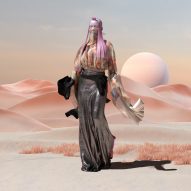
Read:
Virtual fashion will allow people to "go completely crazy" online says Amber Jae Slooten of The Fabricant
](https://www.dezeen.com/2020/10/23/virtual-fashion-amber-jae-slooten-the-fabricant/)
Unlike the virtual trainers released by Gucci and Buffalo London earlier this year, which are not truly owned by the buyer as they cannot be sold on, each RTFKT product is backed by a non-fungible token (NFTs).
This blockchain-based certificate of ownership is linked to a digital asset to verify its authenticity and chain of custody, meaning that it can be collected, traded and sold on for profit, much like a real trainer.
View this post on Instagram
RTFKT has created avatars in collaboration with Takashi Murakami
At only two years old, RTFKT is the youngest brand in Nike's roster, which otherwise includes only other legacy footwear brands such as Converse and Jordan.
The news comes after Nike trademarked the use of its logos and slogans for digital wearables last month and launched its own virtual Nikeland world within the online game Roblox, where players could buy branded products for their avatars.
A slew of other fashion brands has begun investing in the metaverse including Louis Vuitton and Balenciaga, both of which have released video games to supplement their real-life catwalk shows.
The post Nike gets "metaverse-ready" with acquisition of virtual sneaker company RTFKT appeared first on Dezeen.
#fashion #all #design #news #trainers #footwear #digitaldesign #nike #digitalfashion #businessnews #metaverse #rtfkt
RTFKT IS NOW A PART OF NIKE.
— Benit0 RTFKT 👁🗨 (@benitopagotto) December 13, 2021
Since we started, we always looked up to NIKE, with the goal to create the NIKE born on the Metaverse. 2 years later, a new chapter begins, proof that with passion, hard work and the best people, you can achieve anything. Can’t wait for 2022 🌐👁🗨 pic.twitter.com/cXPJsrd8lL
Something Spaces web plugin showcases the work of Black creatives online
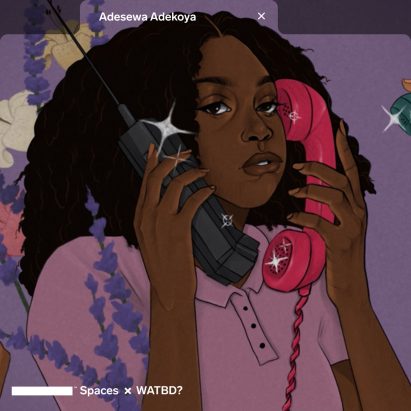
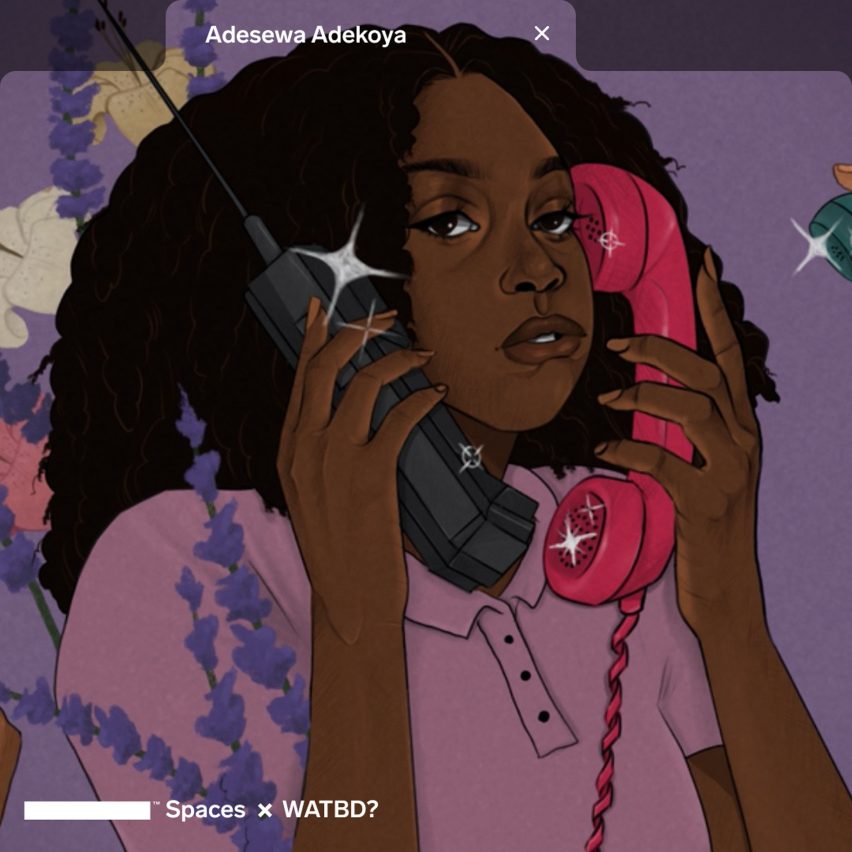
Creative agency Something and nonprofit organisation Where are the Black Designers? have created a web browser plugin that exhibits the work of Black creatives every time a new tab is opened.
Called Something Spaces, the free plugin is available for anyone to download and presents users with an image of artwork by both established and emerging Black artists and designers on their computer screen.
 The Something Spaces plugin showcases the work of Black creatives
The Something Spaces plugin showcases the work of Black creatives
A web plugin is a type of software that adds features to existing programmes, enabling the customisation of a webpage. In this case, the plugin provides a platform for Black creatives to showcase their work online.
Featured creatives hail from the UK and beyond, including London-based illustrator Olivia Twist and Sierra Leonean-American artist Amir Khadar.
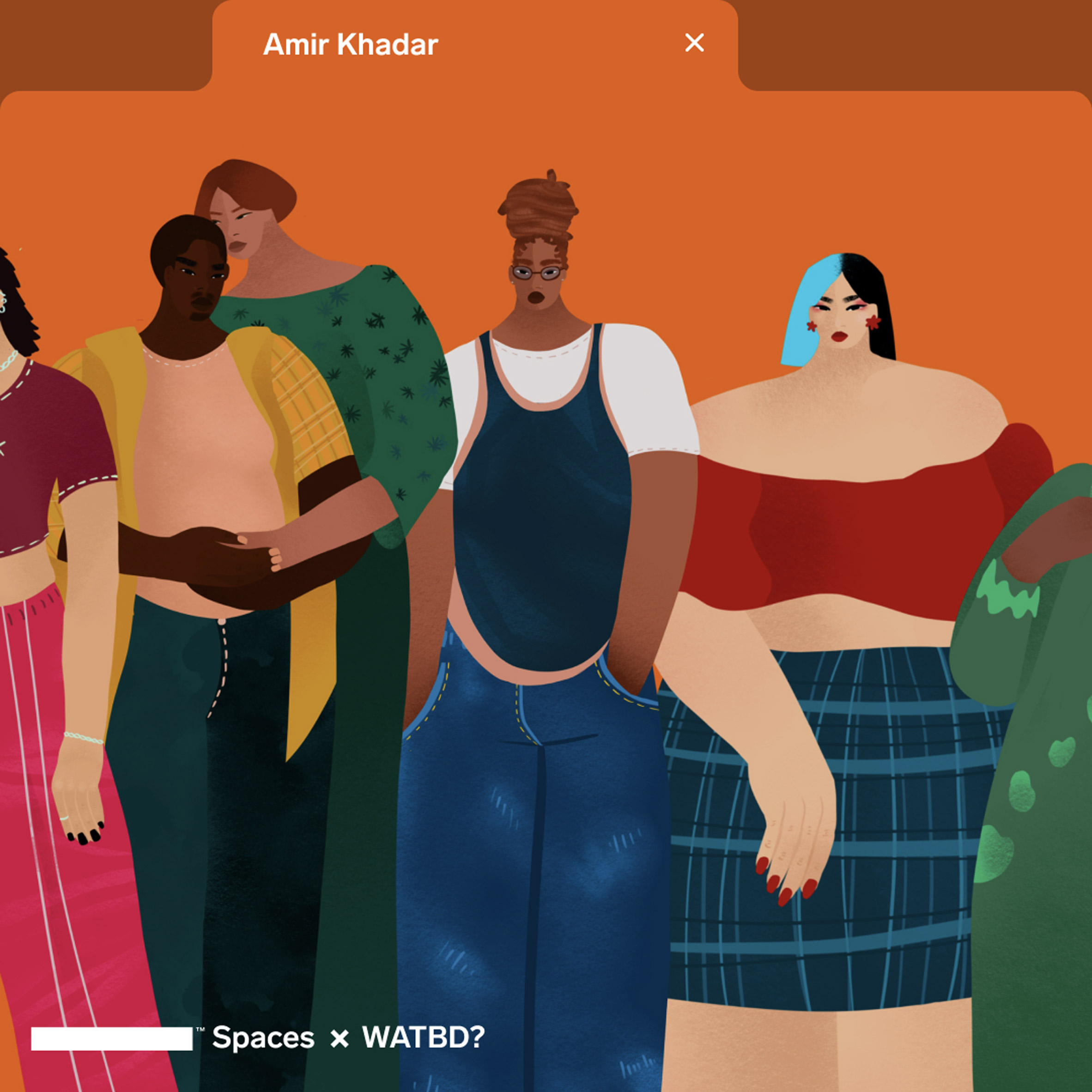 Creative agency Something and non-profit Where are the Black Designers? created the project
Creative agency Something and non-profit Where are the Black Designers? created the project
"You can download the plugin extension to your desktop via Chrome, Firefox and Safari," Something studio manager Roshannah Bagley told Dezeen.
"You'll find an inspiring piece of artwork with every tab you open from local and international emerging creators,"
New York illustrator Adesewa Adekoya and Seattle-based designer Shakeil Greeley are among other American creatives featured in the project, while the work of emerging Brazilian designer Amanda Lobos is also included.
The Something Spaces plugin was created in collaboration with the volunteer-run, non-profit design advocacy organisation Where are the Black Designers?.
Founded in June 2020, the group was established as protests took place worldwide in support of the Black Lives Matter movement following the death of George Floyd.
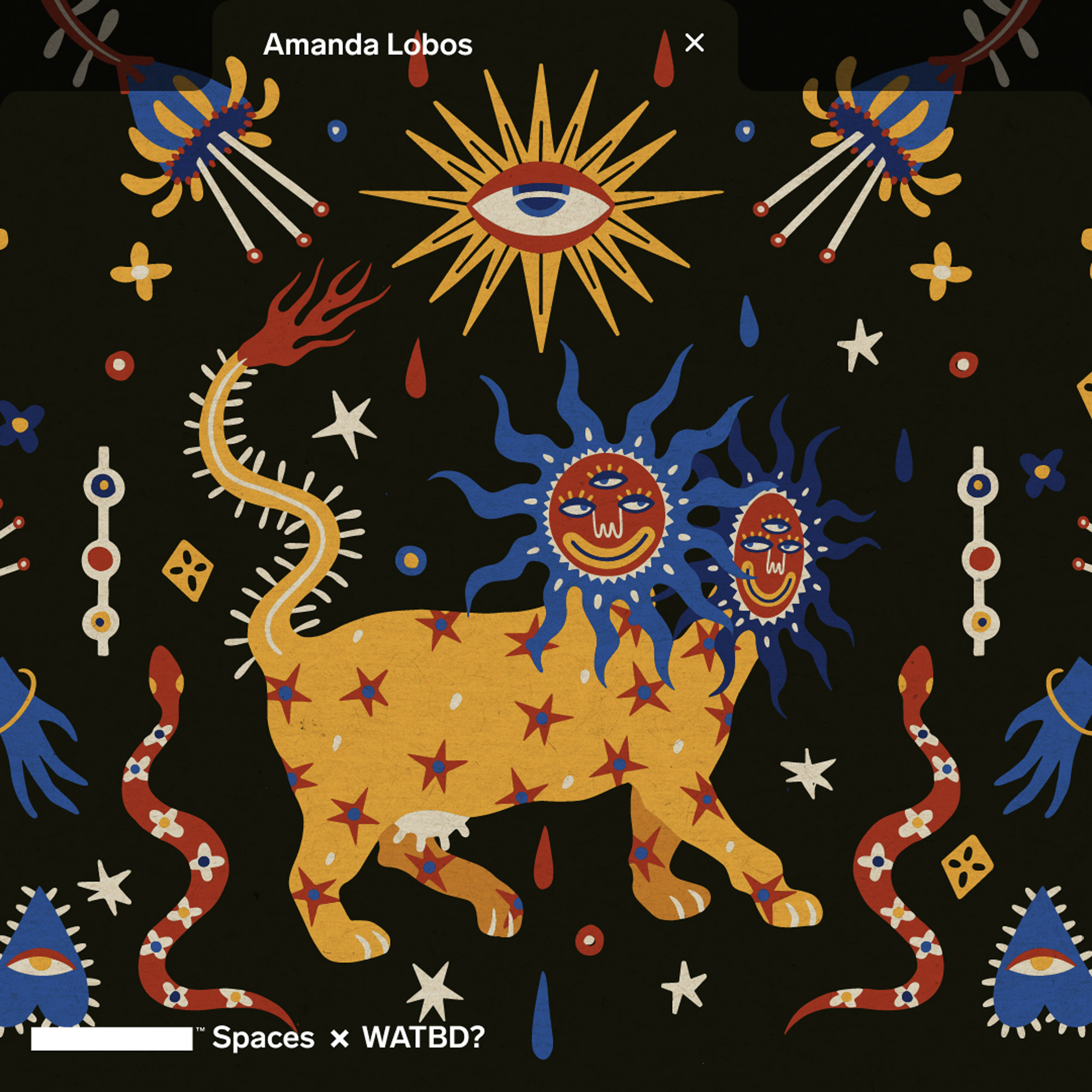 Featured creatives range from illustrators to designers
Featured creatives range from illustrators to designers
The plugin is an extension of Something's Spaces initiative, a project set up by the agency in 2019 that allowed creatives to add their work to overlooked public spaces such as windows of buildings.
Now also online, the project gives artists and designers space that they might not have otherwise had to showcase their work in the virtual world as well as the physical one.
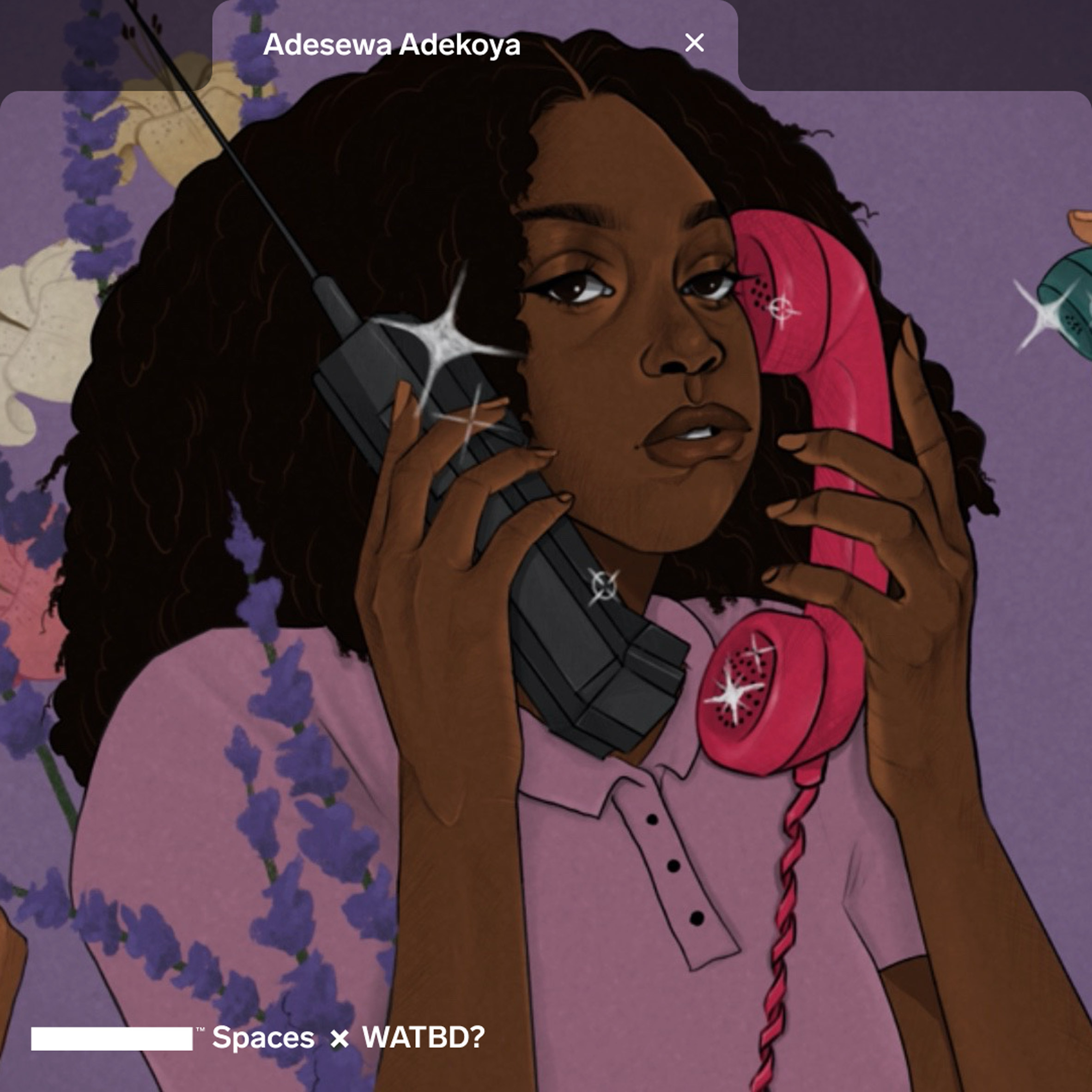 Black artists and designers from the UK and beyond feature on Something Spaces
Black artists and designers from the UK and beyond feature on Something Spaces
"The initiative was created to remove the barriers between underrepresented talent and opportunities," continued Bagley, who is also a member of the Where are the Black Designers? team.
Bagley explained that the project aims to make it easier for those in the creative industry to find and hire talent from underrepresented communities.
"We fill under-utilised spaces such as browser tabs with inspiring artwork creators that are often overlooked. We’re on a mission to reimagine these spaces by turning them into canvases for creativity."
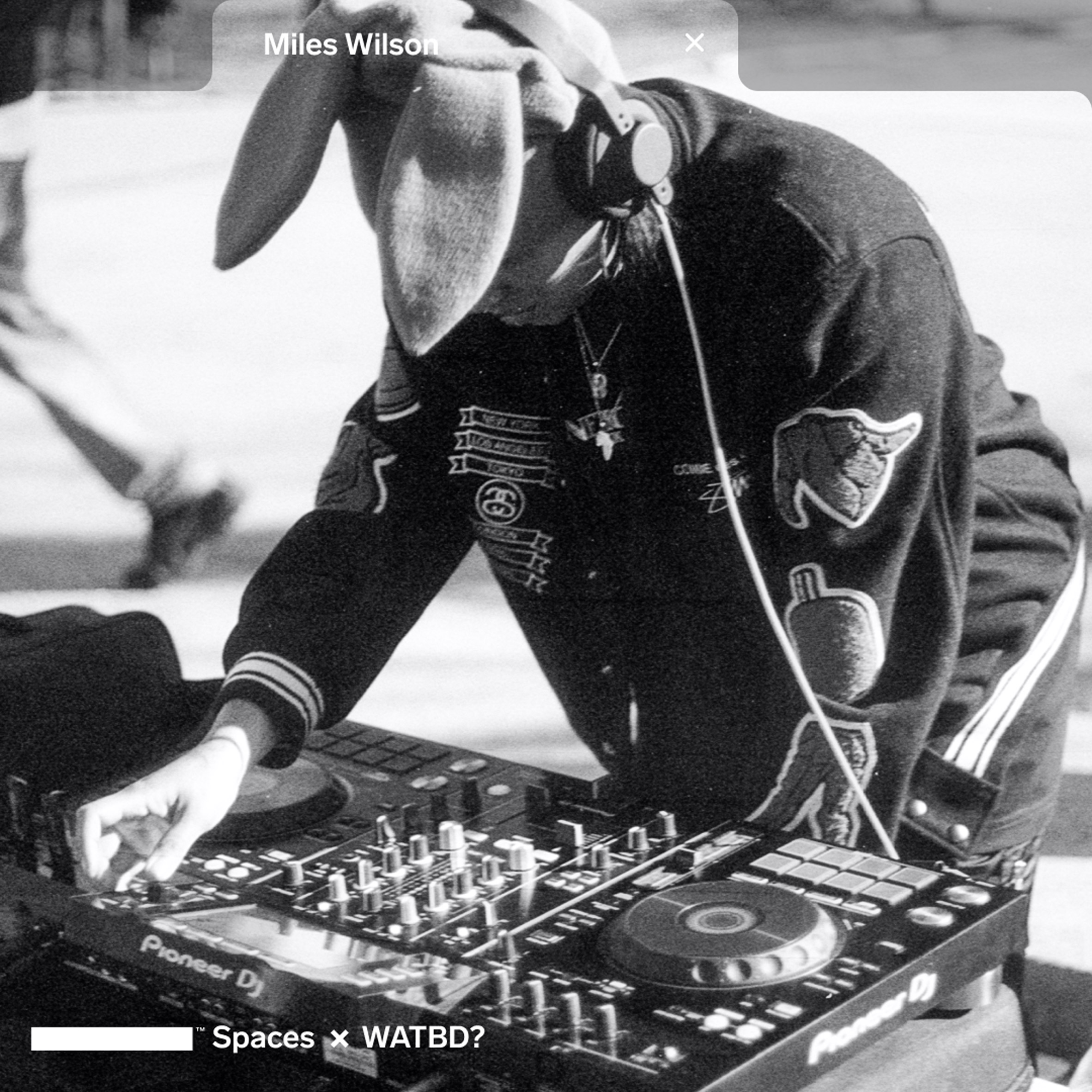 Photography is also included in the plugin's selection of featured artwork
Photography is also included in the plugin's selection of featured artwork
Something is a London and Byron Bay-based creative agency. Where are the Black Designers? is a non-profit organisation that seeks to amplify and support Black artists and designers worldwide.
Recent projects that aim to educate audiences about Black history include an augmented reality app developed by London non-profit BLAM that gives users the opportunity to see virtual plaques and sculptures related to their current location.
The imagery is courtesy of Something.
The post Something Spaces web plugin showcases the work of Black creatives online appeared first on Dezeen.
#softwareandwebdesign #all #design #technology #illustration #digitaldesign #diversity #racialdiversity #virtualarchitectureanddesign
One person like that
